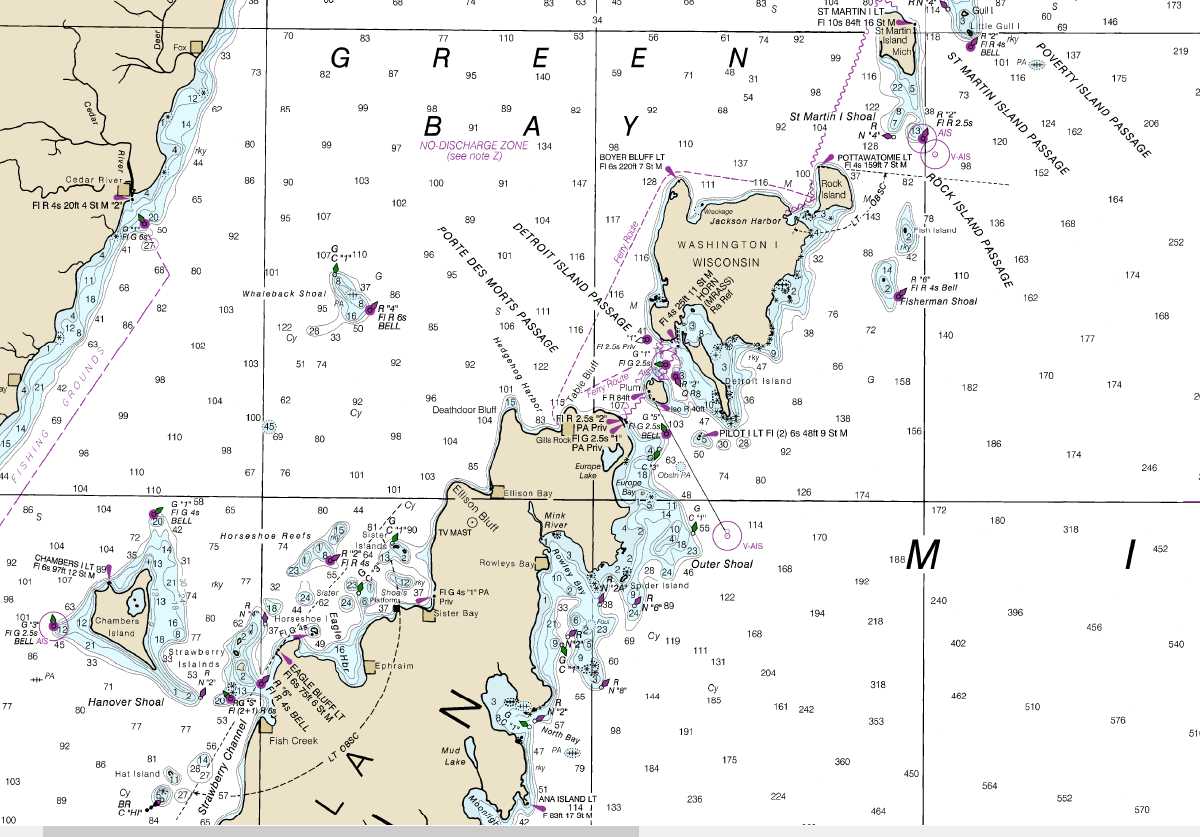Door County got its name from the “Porte Des Morts” nautical passage from Lake Michigan to Green Bay, between the Door Peninsula and Washington Island. “Porte Des Morts” means “Door of the Dead” in French.
While this answer is true, it also simply kicks the can down the road a little bit. How did the Porte Des Morts passage get its ominous name? How did that name get assigned to what would become Door County? This post will help to answer these questions.

The First Step: Native American Oral History
The first step for Door County coming to be named was Native American oral history. These histories describe a great battle between the Potawatomi and Winnebago tribes. The Winnebago were based on the peninsula now known as the Door Peninsula, while the Potawatomi were based on the islands off of the peninsula.
A battle ensued between these two tribes sometime in the mid-1600s, and the histories describe the loss of lives of hundreds of warriors on both sides. Lives were lost both to the hands of their enemies and also on account of a great storm. The storm caused huge waves which swept warriors off the land and that also capsized canoes with warrior in them.
Because of the huge loss of life, histories record that Native Americans came to call the area “The Door of the Dead.”
(Source).
The Second Step: Translation and Transmission by French Explorers
The first Europeans to explore the region around Door County were French, most famously Jean Nicolet, a Roman Catholic missionary priest. The French had the custom of continuing to use the place names of the natives. Often they would simply transliterate the place name.
To transliterate something means to spell something from another language in a way that conveys the sound of the word in another language. This is part of the reason why Wisconsin has so many place names that reflect Native American languages. Examples of transliterated place names in Wisconsin include Kewaunee, Milwaukee, and Oconomowoc.
Sometimes, the French would translate the place name instead of transliterating it. This is the case with what we now call the Porte des Morts passage. The French translated the “Door of the Dead” into French.
Continuing to use this name for the area not only was customary for the French, it also served their economic interests. Just like the Vikings names Iceland to keep others from coming, calling the area Porte de Morts would potentially keep away English explorers and traders.
The Third Step: Transmission and Translation by English Speakers

In 1763 the French lost control of the area now known as Wisconsin with the conclusion of the French and Indian War. The British then controlled the area, and eventually the United States of America would come to control it.
Even though English speaking powers controlled the area from 1763 onward, the French name for the Porte de Morts passage stuck. Even to this day, NOAA nautical charts still call this passage the “Porte de Morts” passage.
Even though officially the passage was still known by its French name, the local residents began to use various English translations. They either called it “Death’s Door,” or “The Door of Death.”
Modified Meaning
What is interesting about both of these translations is that they slightly change the meaning of the French and Native American names. Both the French and the Native American names translate literally to “Door of the Dead.” While this is certainly an ominous name, it also gives honor primarily to those hundreds of warriors who lost their lives in the water of that passage.
The preferred English translations, however, communicate not so much that this passage was a door by which many entered death in the past, but rather that it is a contemporary door for the present living to die. It conveys more of a warning than a memory.
Once Again a Door to Death
We shouldn’t blame these English speakers for slightly modifying the meaning. Most translations modify the meanings of what they translate somewhat. And, given the contemporary state of maritime technology, the Porte des Morts passage had indeed become a place where life was in peril.
Four forces came together in the 1800s and early 1900s to make the Porte des Morts passage particular dangerous. First, the waters are strewn with dangerous rocks and shoals that threaten to break up ships. Second, this passage experiences dangerous water dynamics including strong currents and large waves. Third, strong winds increase the peril of this passage. Fourth, in this era of maritime industry, most ships were powered by sail and were therefore less maneuverable then engine-driven crafts.

Because of this, the Porte des Morts passage became a place of many shipwrecks. This is why a the Plum and Pilot Island Lighthouses were constructed to help navigation of this passage. And, this is why the Sturgeon Bay Ship Canal was eventually constructed, so that ships coming from or going to the south from Green Bay would no longer need to use the Porte de Morts passage.
The Peninsula eventually came to be known as the Door Peninsula in honor of the Porte des Morts passage to its north.
The Fourth Step: Wisconsin State Law
Wisconsin became a state in 1848, and Door County was named a county in 1851. When it was time to name the county, one name came to the top as the best possible name: Door County, in honor of the passage that had been known as a doorway to death for hundreds of years and through three languages.
Conclusion: How Did Door County Get Its Name?
Door County got its name through a process of translation and transmission that began with the oral histories of native Americans and ended in enshrinement in Wisconsin state law.
Summary
- Door County got its name from the Porte des Morts passage between the Door Peninsula and Washington Island.
- This passage has been known as a doorway to death in Native American, French, and English.
- This passage is still known officially as the Porte des Morts passage.
